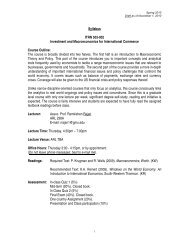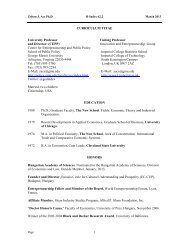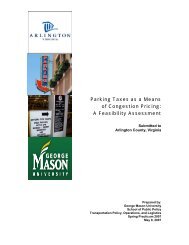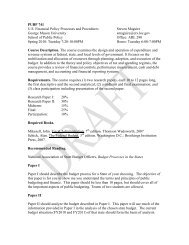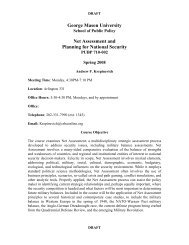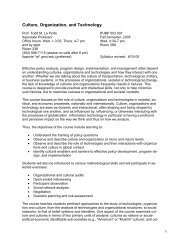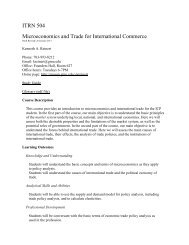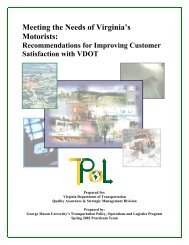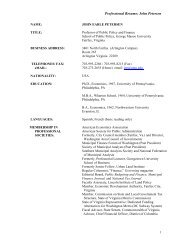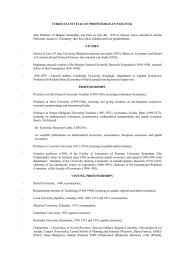Cost Benefit Analysis of Washington-Richmond High-Speed Rail
Cost Benefit Analysis of Washington-Richmond High-Speed Rail
Cost Benefit Analysis of Washington-Richmond High-Speed Rail
Create successful ePaper yourself
Turn your PDF publications into a flip-book with our unique Google optimized e-Paper software.
<strong>Cost</strong> <strong>Benefit</strong> <strong>Analysis</strong> <strong>of</strong> <strong>Washington</strong>-<strong>Richmond</strong> <strong>High</strong>-<strong>Speed</strong> <strong>Rail</strong> Spring 2010<br />
46<br />
Figure 7-2: Reduction in <strong>High</strong>way<br />
Casualties<br />
7.3 Social <strong>Cost</strong>s<br />
Figure 7-3: Saving from Reduced <strong>High</strong>way<br />
Casualties<br />
As in other studies, in our study we can assume no risk <strong>of</strong> accident: Although the cost will be enormous<br />
in the case <strong>of</strong> an accident, the likelihood <strong>of</strong> it happening is almost zero 56 . It will also be very difficult to<br />
try to monetize different magnitudes <strong>of</strong> accidents since, in case <strong>of</strong> an accident, the costs will be specific<br />
to each particular event depending on the track section it happened, the kind <strong>of</strong> trains involved, and the<br />
hour <strong>of</strong> the day (traffic) among other variables to consider. The variance in the value <strong>of</strong> the accident will<br />
be so enormous; there will be no tangible use in trying to obtain such an estimate. For that reason it is<br />
not useful to try to forecast the cost <strong>of</strong> an accident. This does not mean there are no costs associated<br />
with safety, but it is more appropriate to consider them in infrastructure costs (i.e. signaling, elimination<br />
<strong>of</strong> grade crossing and shunting).<br />
2005 2006 2007 2008<br />
Target 17.15 16.80 16.70 18.45<br />
Actual 18.03 17.42 16.56 15.74<br />
Table 7-1: <strong>Rail</strong>-related Accidents and Incidents per million train miles 57<br />
There have been some good efforts to try to evaluate noise pollution. In most <strong>of</strong> those cases it involves<br />
noise levels in cities and in industrial areas, where noise is constant. Nevertheless we want to mention<br />
some <strong>of</strong> the results made by Hanson and Levinson for high speed train:<br />
56 There are 18.45 train related accidents per million train miles travelled, Source:<br />
(http://www.dot.gov/par/2008/SSG.htm)<br />
57 U.S. DOT, “Performance Report: Strategic and Organizational Goals Safety Strategic Goal ,”<br />
http://www.dot.gov/par/2008/SSG.htm



